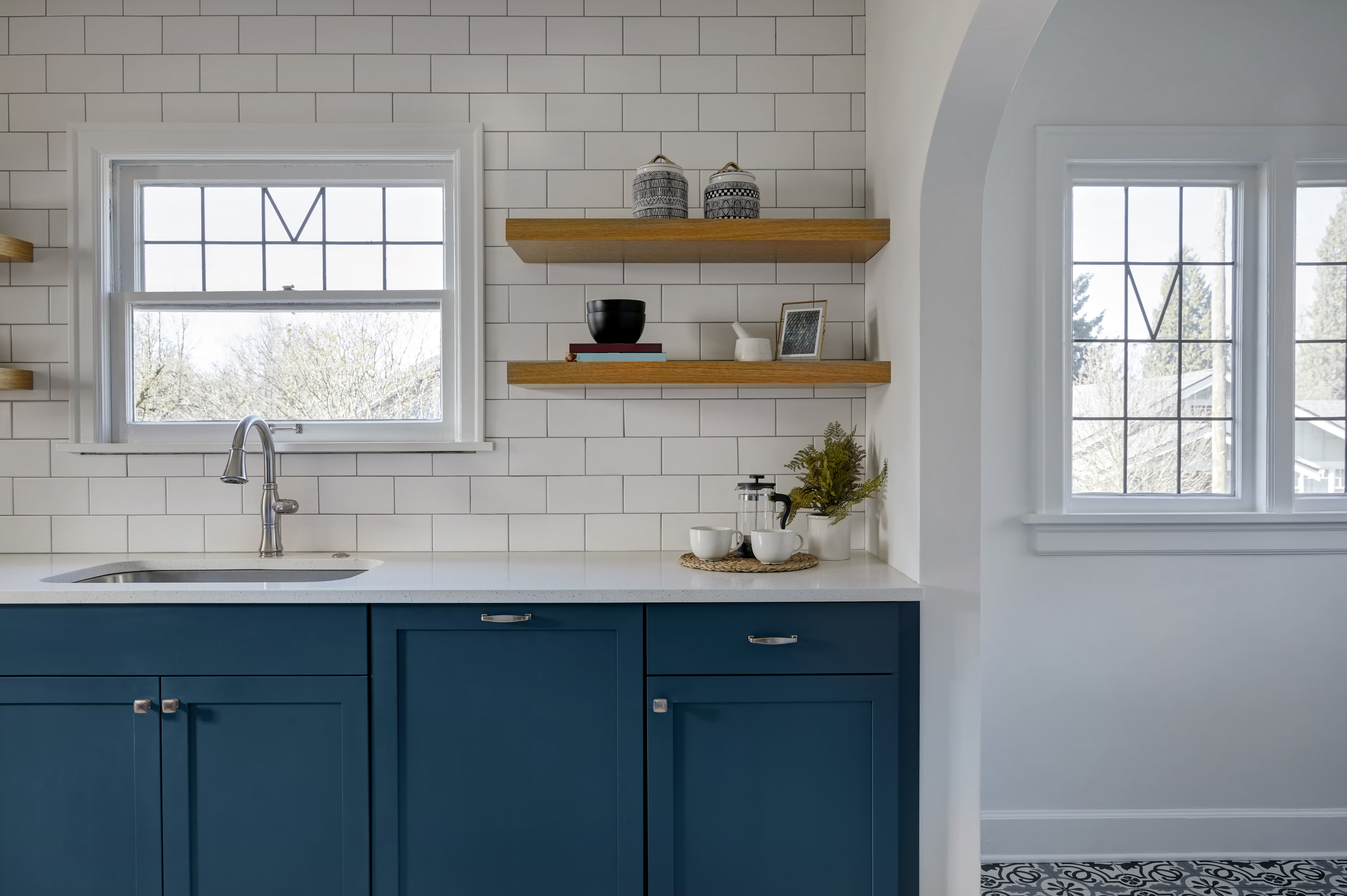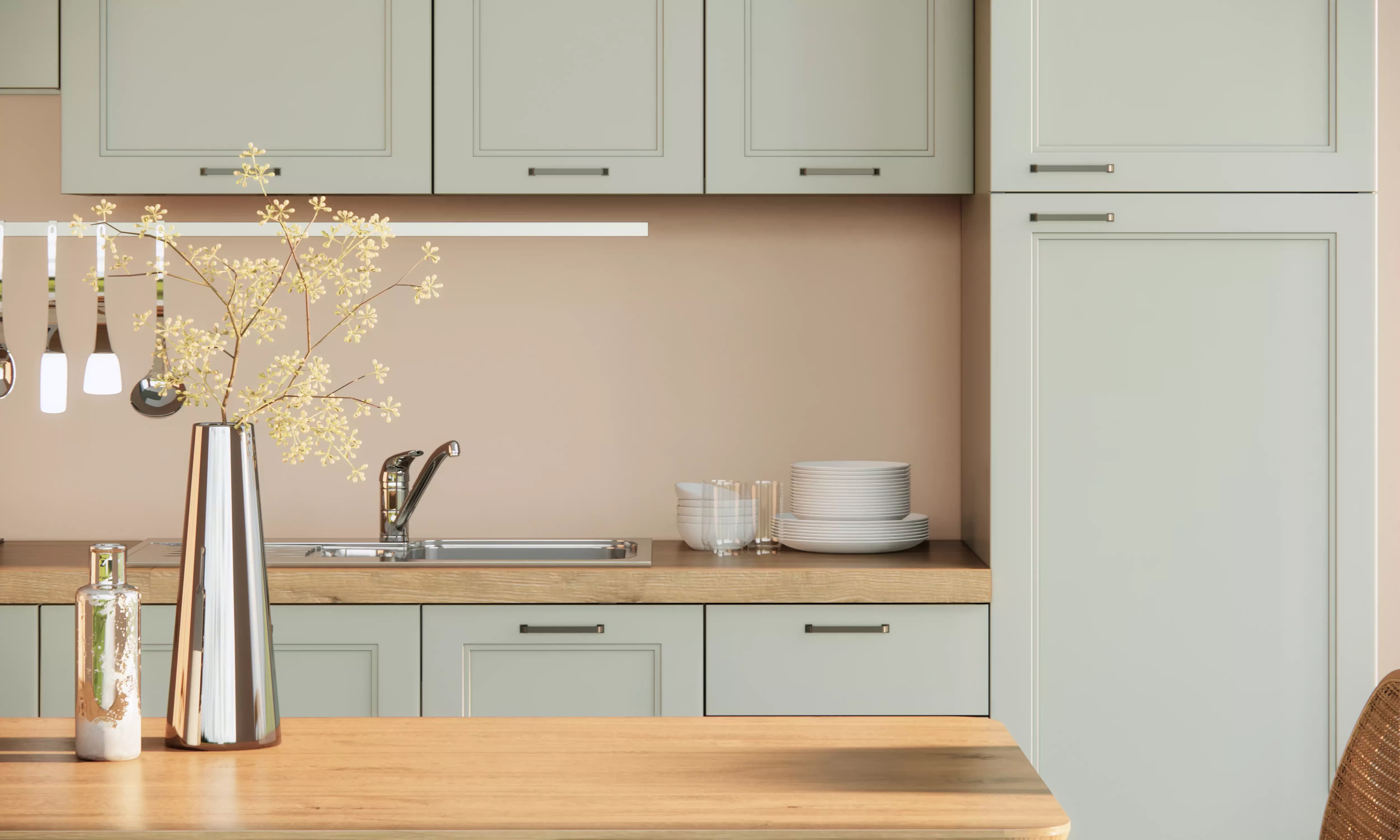How to Choose the Right Kitchen Cabinet Hardware
Posted by Seconds & Surplus Staff on Jul 24th 2024

When remodeling or updating a kitchen, one of the most overlooked but crucial details is the cabinet hardware. Choosing the right knobs and pulls should mean taking style into account, but you should also consider comfort, functionality, and enhancing the overall aesthetics of your kitchen.
We’ve put together a comprehensive guide to help you make the best choices for your kitchen cabinet hardware.
TL;DR: Choosing the Right Kitchen Cabinet Hardware
- Types of Hardware: Knobs (small, single screw) and Pulls (larger, two screws).
- When to Choose Knobs: Ideal for upper cabinets and small doors due to simplicity and ease of use.
- When to Choose Pulls: Suitable for larger drawers and base cabinets for better grip and handling heavier items.
- Mixing Knobs and Pulls: Can enhance functionality and aesthetics; match materials or colors for a cohesive look.
- Proper Placement: Upper cabinets: 2.5-3 inches from lower edge; Lower cabinets: 2.5-3 inches from upper edge; Drawers: center horizontally.
- Choosing Hardware Size: Proportional to door/drawer size; small drawers (3-4 inch pulls), medium (4-8 inch pulls), large (8+ inch pulls).
- Choosing Hardware Color: Match style; modern (stainless steel, chrome), traditional (bronze, brass); consider mixing metals for added depth.
Keep Reading: Ready to dive deeper into choosing the perfect kitchen cabinet hardware? Explore detailed guidelines on hardware types, placement tips, size and color choices, and expert advice to enhance your kitchen’s functionality and style in the article below.
The Types of Cabinet Hardware
Before you look into how to choose kitchen hardware for kitchen cabinets, you should know the difference between the main options:
- Knobs: Knobs are small, typically round or square, and attached to doors or drawers with a single screw. They are subtle and can work well in any kitchen design. Knobs are particularly useful for smaller doors and drawers.
- Pulls: Pulls are larger than knobs and generally require two screws. They come in various sizes and shapes, such as bar pulls, cup pulls, or bin pulls. Pulls are ideal for larger drawers and cabinets where more force is needed for opening.
Now that you know what your options are, you need to know some of the guidelines on whether to choose knobs or pulls for your cabinets.
Rules For Kitchen Cabinet Knobs and Pulls
Selecting the right cabinet hardware is crucial to your kitchen’s functionality and style. The best hardware choice can reflect your taste while complementing the overall design and functionality of your kitchen.
Here are some rules for cabinet knobs and pulls.
When to Choose Knob Handles
Knobs are perfect for most kitchen cabinets because of their simplicity and ease of use. They are especially suitable for upper cabinets, where they help keep the aesthetic uncluttered. Knobs are also a great choice for small cabinets or tight spaces.
When to Choose Pull Handles
Pull handles are better suited for larger drawers that hold heavier items. They offer a more substantial grip, which makes pulling smoother and easier. Pulls are also ideal for base cabinets, where the ability to handle more weight is beneficial.

Should You Mix Knobs and Pulls?
Mixing knobs and pulls can add interest and functionality to your kitchen if you use pulls on drawers and knobs on cabinets to balance aesthetics and practicality.
For the best look, make sure that the knobs and pulls match when used together. For example, you can choose knobs and pulls of the same color or the same material.
Proper Placement of Knobs and Pulls
One of the most important rules for cabinet knobs and pulls is placement.
Proper positioning boosts your kitchen’s visual appeal and ensures functionality and comfort while opening cabinets.
Here are some basic guidelines to help you begin:
- Upper Cabinets: Position knobs or pulls approximately 2.5 to 3 inches from the lower edge of the door or drawer.
- Lower Cabinets: Place hardware about 2.5 to 3 inches from the upper edge.
- Drawers: Align cabinet pulls or knobs horizontally at the center of the drawer face.
To achieve uniform hardware placement across all cabinets and drawers, consider using templates or jigs. This allows you to precisely mark where each piece of hardware should go.
Creating a mock-up with tape or a temporary adhesive to preview the appearance before making any permanent alterations is also another great rule of thumb to follow.
How to Choose Kitchen Cabinet Hardware Size
The size of the hardware should be proportional to the size of the doors and drawers. A common rule is that pulls should be approximately 1/3 the width of the drawer. For larger drawers and cabinets, consider wider pulls for ease of use and balance.
Drawer size also plays a big part in what size hardware you’ll need:
- For small drawers measuring 12 inches or less, a 3 to 4-inch pull or a 1-inch diameter knob is typically most suitable.
- Medium-sized drawers, ranging from 12 to 30 inches, are best fitted with pulls measuring 4 to 8 inches in length or knobs that are 1 to 1.5 inches in diameter.
- Large drawers, from 30 to 48 inches, should have pulls longer than 8 inches or knobs larger than 1 inch in diameter. It is also effective to use two pulls or knobs on a single large drawer.
How to Choose Cabinet Hardware Color
Choosing the right color or finish depends largely on the style of your kitchen. Stainless steel, brushed nickel, and chrome are versatile and fit well in modern kitchens. For a more traditional or rustic look, opt for bronze or brass.
If you want to add a pop of color, consider ceramic or glass knobs. Glass knobs are trending in recent kitchen designs and can give your cabinets an elegant touch.
Mixing Metals
Mixing metals in your kitchen hardware can add depth and interest to the overall design. When done thoughtfully, combining different metal finishes such as brass with chrome or copper with stainless steel can create a dynamic aesthetic.
To successfully mix metals, choose one dominant metal finish for consistency and use others as accents. This approach ensures a balanced look that ties together various elements within the kitchen.
Additionally, consider the undertones of the metals; warm tones like brass or copper pair well with cool tones like chrome or silver, providing a beautiful contrast.
Seconds & Surplus Has The Kitchen Cabinet Hardware You Need
When it’s time to choose your kitchen cabinet hardware, visit Seconds & Surplus. Our selection includes a wide range of knobs and pulls that will fit any style and budget.
Whether you’re looking for classic elegance or modern simplicity, we have the perfect hardware to complete your kitchen’s look.

